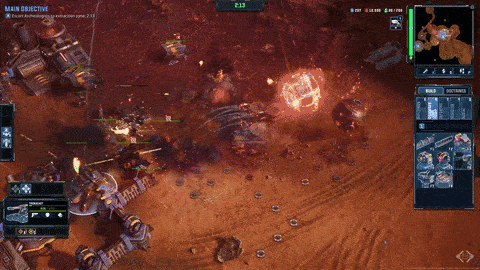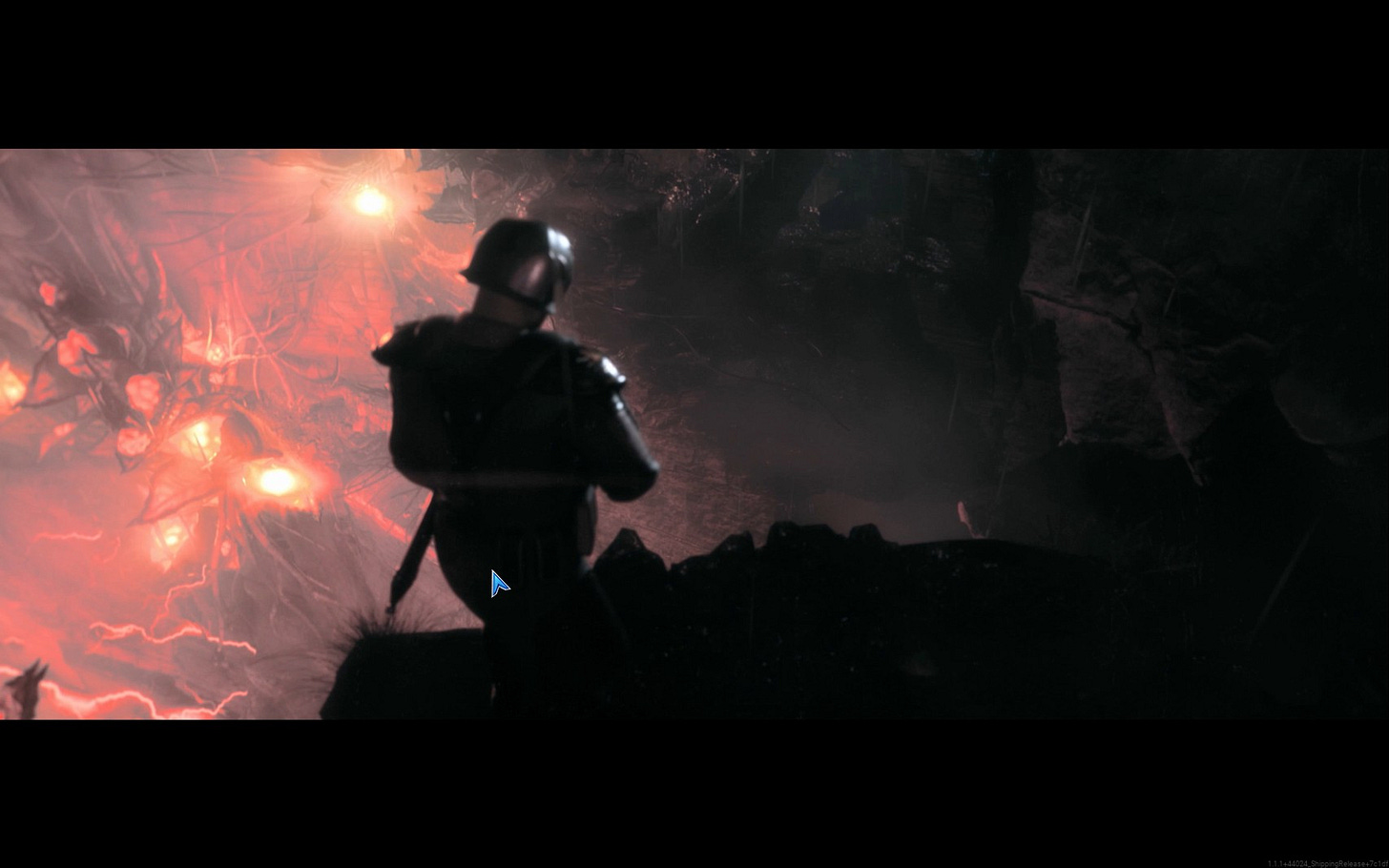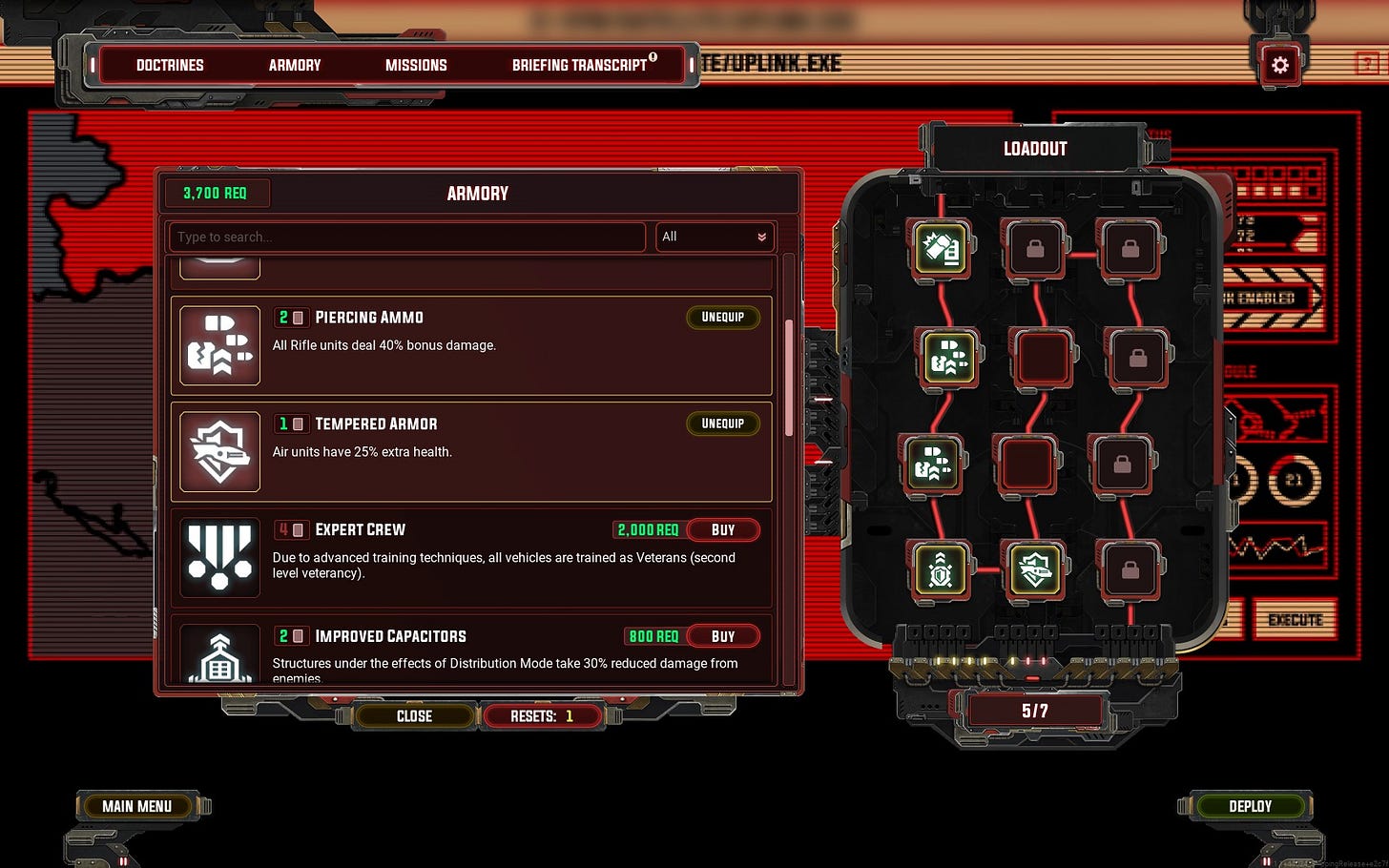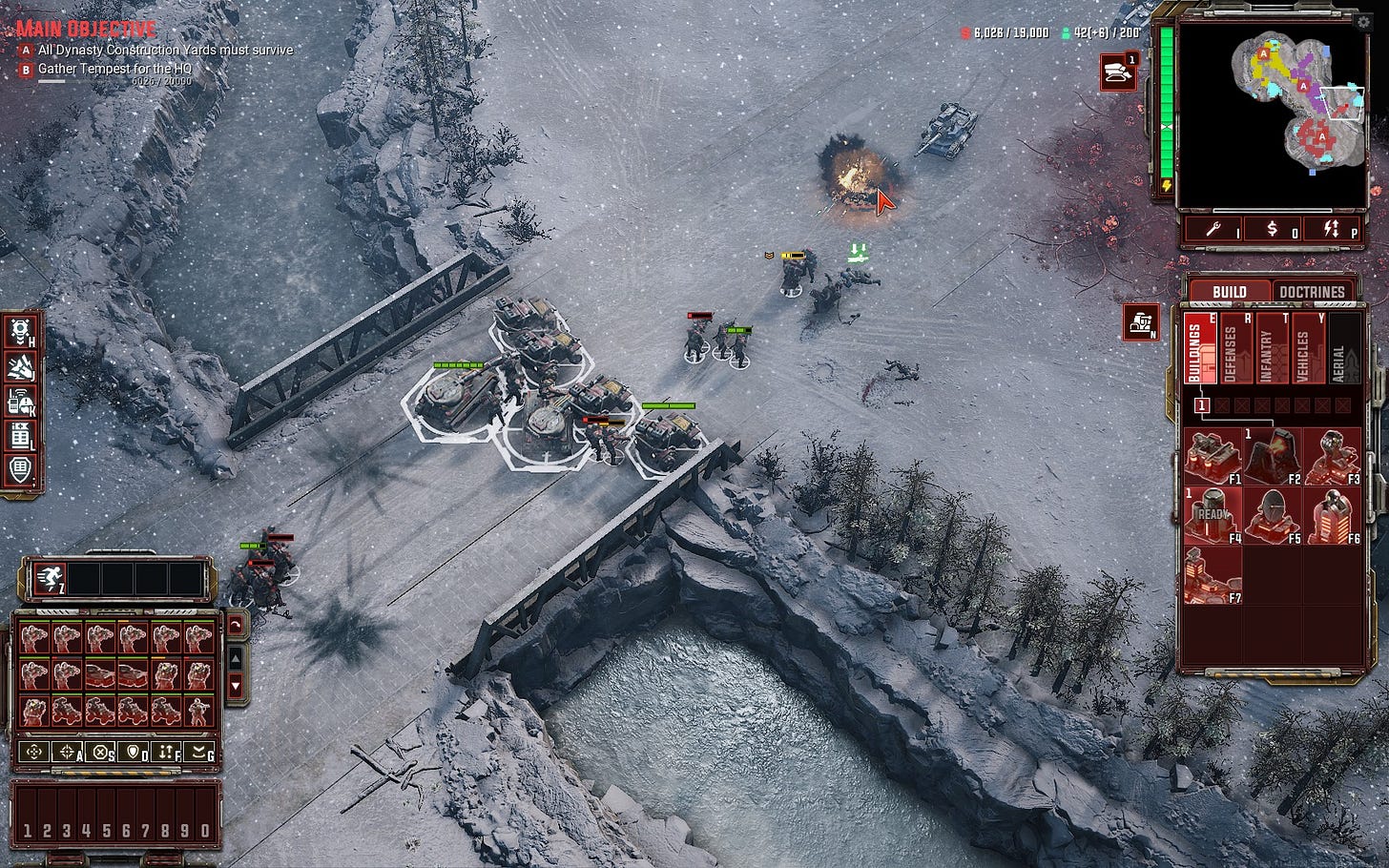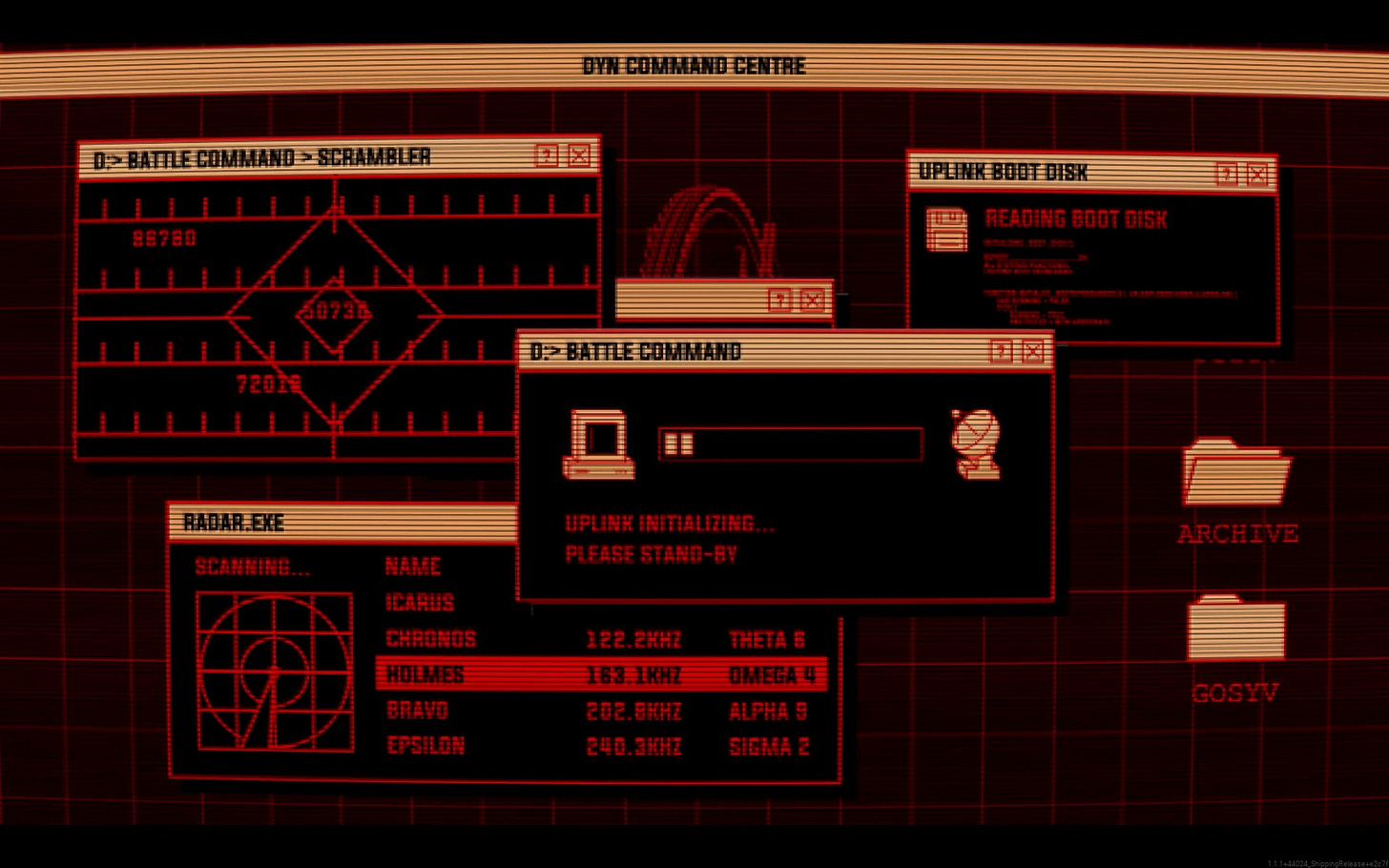Tempest Rising
Tempest Rising is both a love letter to what came before and a bold attempt at an original RTS by a new generation of creators. How does it pull this off?
Disclaimer: This article was done with the game’s Deluxe Edition, unlocking “Advanced Access” on April 17, 2025. Some of the issues brought up pertain to the experience of both that launch and the game’s state as of May 18, 2025. A version of this review will be published by Hardcore Gaming 101 in the foreseeable future.
In recent years, Real Time Strategy, once written off by critics as a dead or niche genre, has seen a resurgence. Yet while works like Age of Empires IV and Age of Mythology: Retold have proven that the classics still have a lot of life left in them, high-profile IPs have remained hard to come by. This is where Danish-based Slipgate Ironworks, Polish studio 2B Games and publisher 3D Realms enter the picture, which took it upon themselves to bring their own spin on that formula. The result is Tempest Rising, at once a love letter to what came before, and a bold attempt at an original RTS by a new generation of creators. Moreover, it’s an attempt that has succeeded, and not just for merely existing, either.
Released for PC and consoles on April 17, 2025 (about a week before its original April 24 launch), the game has come a long way from its 2022 reveal in a THQ Nordic event. The announcement itself came as a surprise, in more ways than one, as this marked the first proper foray into the genre for the studios involved. Slipgate was (and still is) known more for action titles inspired by the likes of DOOM and Duke Nukem 3D, while 2B had previously done outsourcing work for titles as varied as Expeditions: Rome and War Mongrels. At the same time, even over a decade after the fact, memories of Command and Conquer 4: Tiberian Twilight‘s abysmal reception and the aborted Generals 2 project under Electronic Arts’ watch continued to persist. These factors seemed to fuel skepticism, if not a fear of disappointment, among older gamers. With all that in mind, to say nothing of the competition from both established IPs and other upcoming independent titles (including Frost Giant Games’ Stormgate), there was much to prove.
Such concerns and the expectations being placed certainly weren’t lost on the developers, as revealed in a series of behind-the-scenes features. Whether it’s bringing aboard competent enthusiasts and modders — lead designer Brandon Casteel, for instance, is the founder of popular gaming site Wayward Strategy, while Stefan Matthews of “No Strings Prd” fame on YouTube serves as the main writer — or the industry veterans at the helm also having grown up playing the classics in their youth, a recurring thread in their commentary was a desire to recapture the experience of what it’s like to play such works, both for themselves and younger fans. More than merely trying to replicate that sense of nostalgia (with the idea having reportedly been brewing among the creators since as early as 2014), this also means looking into (and reverse-engineering) the foundations of what makes a good RTS in the first place. Something which involves taking the lessons learned over the years from both past successes and failures in the genre, to make something that could stand on its own. What they came up with is certainly interesting, and anything but amateurish.
Set about a century before the events of Slipgate’s shooters featuring action heroine Shelly “Bombshell” Harrisson, Tempest Rising follows a world at the cusp of a bold new era, and more than a little familiar. The year’s 1997, over three decades since the Cuban Missile Crisis led to World War III, and a strange, vine-laden organism called Tempest began spreading across the irradiated wasteland. In their wake, the geopolitical landscape has once more been split in two. On one side is the Global Defense Force, an international peacekeeping organization that’s taken upon itself the thankless task of rebuilding civilization and saving lives, while securing as much the otherworldly substance as it can along the way. On the other is the Tempest Dynasty, a powerful movement which emerged from the ruins of the Soviet Union to become the dominant power in Eurasia, both fighting to preserve their way of life and promising a better future for mankind through the mysterious resource that’s its namesake. As the struggle over the resource intensifies, however, an ancient race called the Veti slumbers, biding their time until they could reclaim what they believe is rightfully theirs. How the rest plays out, is up to you, as the commander tasked with seeing your forces to victory or oblivion.
The two campaigns make a strong effort in terms of style and substance, evidently being where a good deal of the creators’ attention had been over development. The CGI briefings, framed much like the FMV cutscenes of yesteryear, generally have the option of either asking a series of questions that flesh out the universe and certain characters more, or just cutting to the chase. Even the way the overarching UI stylings for each side are conveyed, be it the sleek and hypermodern interface of the GDF or the mid-1990s operating system trappings used by the Dynasty, help in selling that sense of immersion. The 22 missions comprising those modes not only do a good job easing you into each side’s mechanics and being dynamically varied in terms of what to get done – with standard “assault the enemy base” goals, covert commando-type raids, and frantic defensive stands happening over the course of a single level alone – but also incentivize going after secondary objectives by granting points that can be spent to acquire unique perks (like extra starting units and widespread energy weapons) which are carried over. Granted, the overarching storyline isn’t the most groundbreaking out there, and the cast isn’t too memorable save for a handful like the enigmatic Domovoy Molchanin. Yet combined with swappable upgrades and bonuses, as well as separate skirmish mode, these go a long way in encouraging repeat playthroughs.
Much has been placed as well on presentation, which goes the extra mile in bringing Tempest Rising’s world to life. The attention to detail is evident in units and buildings alike (down to the attachments on infantry weapons and smoke bellowing from vehicles), especially when zoomed up close, which comes across as both over-the-top and grounded. The myriad maps available in both the campaigns and skirmish mode, meanwhile — from wintry mountainsides strewn with imposing bunker entrances to decaying European cityscapes overgrown with strange vines and chaotic hellscapes left over from the nuclear war — succeed in conveying a lived-in yet vibrant backdrop for the ensuing carnage. That all this is achieved without compromising readability – it’s easy to tell apart different troop types, as well as which parts of the battlefield are interactable – and performance (with the graphics scaling well enough to be readily playable on a Steam Deck) is particularly impressive. Add in solid, bombastic voice work in unit responses and dynamic music that meshes in orchestral, metal, and electronic motifs — with a lengthy soundtrack composed by Michael Markie, Sigurd Jøhnk-Jensen, and Frank Klepacki of Command and Conquer fame, among many others — and there’s no shortage of memorable atmosphere or pumped-up action on hand.
Each of the two playable factions stands out in more ways than just aesthetics. The GDF, for instance, can not only query structures by plopping down foundations but also gather a secondary resource called “intel” that’s used to access more powerful and specialized units. On the other hand, the Dynasty can implement and switch between faction-wide “plans” as needed depending on the situation (such as the “Security Plan,” prioritizing radar visibility and cheaper production), while their power plants can be recalibrated to accelerate production in nearby structures at the expense of structural integrity. Which isn’t getting to their access to powerful “Specialists” (ranging from combat-focused commando units to support-oriented types), which both complement nearby friendly units and reward good micromanagement with their unique abilities. Or how progressively divergent each side’s arsenal becomes the further up the tech tree you go, from the trebuchet heavy tank doubling as a long-range artillery piece to the deceptively ludicrous Tempest Sphere being capable of rolling over other vehicles with impunity and flanking enemy positions with speed boosts. While aircraft leaves something to be desired (with only helicopter and VTOL-type units available), there’s certainly more than enough to make them more than just Global Defense Initiative and Brotherhood of Nod knockoffs.
While echoes of the Tiberium saga are undoubtedly found meshed into the gameplay itself — aside from a similar fuel being fought over, there’s the use of engineer units to capture structures, timed support powers to help turn the tide, and tanks having the ability to run over grunts and smaller vehicles — this isn’t a mere copy-paste job. Quality-of-life features like streamlined controls, production tabs, and semiautomated resource gathering help in making the prospect of commanding armies less daunting. Pathfinding, a perennial problem in older RTS games to varying degrees, is a relative nonissue, with troops moving where you want them on the battlefield with little fuss. Unit counters and status effects (be it debuffs from being marked by enemies or infantry getting damage reduction by going “prone”) are intuitive without being too complicated or restrictive. Combined with decent AI (which knows how to keep pressure on players and use combined-arms tactics even on lower difficulties) and how feedback is mechanically and visually immediate — with successful attacks and subsequent explosions, feeling like they have weight — the end result is a modernized RTS experience that encourages myriad playstyles while still managing to capture what made the classics so addicting. That much of what’s on hand works as intended, and is feature-complete straight out of launch with no strings attached is also commendable.
This isn’t to say it has been all smooth sailing for Tempest Rising, however. The Veti, as of this article’s posting, are not yet available as a playable faction despite their presence in the campaign. Though this particular issue was previously acknowledged by Slipgate and 2B, it may still disappoint those hoping to try them out in skirmish matches. The focus on single-player content over most other considerations means that while there are ranked and casual online modes, these are serviceable at best and barebones at worst. Balance can be inconsistent (with certain units and abilities being flat-out overpowered), with little in the way of fleshed-out multiplayer options, in contrast to more established and competitive-oriented titles like StarCraft II. There’s also a lack of an editor mode and maps accommodating more than four players at once, which, combined with the rather low active player counts on Steam — as of May 18, it has a modest peak of just over 2,200 online compared to the 9,429 recorded on April 21 — risks the game’s longevity. Coupled with some lack of polish in the CGI cutscenes and the occasional technical error leading to crashes, one gets the impression of a work that had stuff left at the cutting-room floor for it to get out in good shape. Even setting aside how trying to meet the expectations of myriad long-time fans would be a tall order even for veterans familiar with the genre, the developers’ relative inexperience in the genre becomes rather apparent.
All said, these problems are anything but terminal, failing to diminish an otherwise solid title that’s at once original and an affectionate homage to what came before. Such sentiments are shared by several game reviewers, garnering an 82% recommendation on Opencritic, and an aggregate score of 80% on Metacritic. For whom even with the inevitable (and perhaps unfavorable) comparisons to Westwood Studios and EA Los Angeles’ handiwork (not helped by prior hype around being a spiritual heir to Red Alert or the Tiberium saga) it still stands proudly as a breath of fresh air. All the more significant, however, is how gamer reception (with a Steam user ratings of 89%) has translated into strong sales, to the point of being among the Top 12 best-sellers for April 2025. Given other high-profile releases that month and the uphill battle faced by any original IP, let alone in a genre still seen by some as niche if not dead, being able to garner enough revenue to make it into the same category as Bethesda’s The Elder Scrolls IV: Oblivion Remastered and Sandfall Interactive’s Clair Obscur: Expedition 33 is no small accomplishment.
It's likewise clear that neither Slipgate nor 2B is resting on their laurels, having committed to improving upon Tempest Rising, and not simply doing the bare minimum. While progress has been relatively slow compared to larger competitors (with only a handful of balance and hotfix patches so far), the developers have actively been listening (and responding) to player feedback, keeping fans up to date both through community managers or directly on social media. Though no roadmap has been formally posted online, a playable Veti faction, additional units, new maps and the much-requested editor are almost certainly on the horizon. With a robust and feature-rich foundation already in place, fans appear open to trusting the developers' future plans enough to give them time. Although it’s still too soon to say whether the game truly is a worthy successor to Command and Conquer, or if it will foster a similar modding and multiplayer scene somewhere down the line, the mere fact that this has made any waves at all not only bodes well for its own future. For others willing to take the plunge into RTS gaming, this may be a welcome sign that their projects may also have a chance to get their time in the sun. If nothing else, that may be its greatest legacy.





